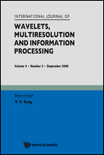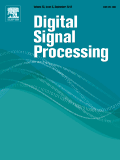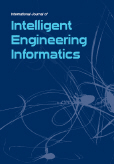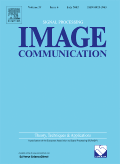
International Journal of Wavelets Multiresolution and Information Processing
Scope & Guideline
Transforming Complex Problems into Clear Solutions
Introduction
Aims and Scopes
- Wavelet Theory and Applications:
The journal publishes research on wavelet transforms, including their mathematical foundations, properties, and applications in signal processing, image analysis, and data compression. - Multiresolution Analysis:
It explores techniques for analyzing data at multiple resolutions, which is crucial for applications in computer vision, medical imaging, and more. - Statistical and Machine Learning Methods:
Research involving statistical methodologies, machine learning, and data mining techniques that leverage wavelet and multiresolution frameworks is a core focus. - Signal Processing Innovations:
The journal highlights innovative approaches in signal processing, including noise reduction, feature extraction, and signal reconstruction using wavelet-based techniques. - Interdisciplinary Applications:
Research that bridges wavelet theory with fields such as biomedical engineering, telecommunications, and environmental science is actively encouraged.
Trending and Emerging
- Deep Learning Integration:
There is a significant rise in research integrating wavelet techniques with deep learning frameworks, particularly in areas like image processing and feature extraction. - Federated Learning and Privacy-Preserving Methods:
Emerging themes include federated learning approaches that utilize wavelet transforms for privacy-preserving data analysis, reflecting a growing interest in data security. - Real-Time Processing Techniques:
Recent studies emphasize real-time applications of wavelet methods for signal and image processing, showcasing the demand for efficient algorithms in practical scenarios. - High-Dimensional Data Analysis:
Research focusing on wavelet-based methods for analyzing high-dimensional data sets has gained traction, particularly in machine learning and statistical modeling. - Multimodal Data Fusion:
There is an increasing trend in using wavelet transforms for the fusion of multimodal data, such as combining visual and auditory information in machine learning applications.
Declining or Waning
- Traditional Statistical Methods:
There has been a noticeable decrease in papers focusing solely on traditional statistical methods without integration into wavelet or multiresolution frameworks, indicating a shift towards more advanced computational techniques. - Basic Wavelet Transform Applications:
Research centered on the basic applications of wavelet transforms without further enhancements or novel implementations has declined, as researchers seek more complex, innovative solutions. - Fundamental Theoretical Developments:
Although theoretical advancements remain important, there is less emphasis on purely theoretical papers that do not include practical applications or computational aspects.
Similar Journals

DIGITAL SIGNAL PROCESSING
Unlocking New Dimensions in Electrical EngineeringDIGITAL SIGNAL PROCESSING is a leading academic journal published by Academic Press Inc Elsevier Science, serving as a vital resource in the fields of applied mathematics, artificial intelligence, signal processing, and electrical engineering. With an impressive set of rankings, including a Q2 designation in multiple categories such as Applied Mathematics and Computer Vision and Pattern Recognition, this journal aims to disseminate high-quality research that addresses both theoretical and practical aspects of digital signal processing. Its rigorous peer-review process ensures the publication of original articles, review papers, and innovative applications, making it an essential platform for researchers and professionals dedicated to advancing this dynamic field. While currently not an open-access journal, it maintains a significant impact factor, reflecting its esteemed position within the academic community. The journal's ongoing commitment to exploring new trends and methodologies positions it at the forefront of digital signal processing research, driving both scholarly inquiry and practical application from 1991 to 2024.

Image Processing On Line
Empowering collaboration in the realm of signal and software processing.Image Processing On Line (ISSN: 2105-1232, E-ISSN: 2105-1232) is a pioneering open-access journal published by IMAGE PROCESSING ONLINE-IPOL since 2011, dedicated to advancing the field of image processing through the dissemination of high-quality research and innovative methodologies. Based in France, the journal serves as a platform for researchers, professionals, and students to share insights and breakthroughs in the rapidly evolving domains of Signal Processing and Software. With its current ranking as Q4 in both categories according to the 2023 category quartiles, and a Scopus ranking highlighting its significance within the computer science field, the journal is focused on nurturing contributions that push the boundaries of image processing techniques. Accessible to a global audience, Image Processing On Line is crucial for those engaged in both theoretical explorations and practical applications, ensuring a collaborative repository of knowledge that fosters innovation and development in this vital area of technology.

International Arab Journal of Information Technology
Connecting Scholars to Transform the Tech WorldWelcome to the International Arab Journal of Information Technology, a prestigious publication under the aegis of ZARKA PRIVATE UNIVERSITY in Jordan, dedicated to advancing the field of Information Technology. First established in 2008, this journal has made significant strides in disseminating high-quality research, achieving an impressive Q2 ranking in Computer Science (miscellaneous) and securing a notable 57th percentile position in the Scopus rankings. With a comprehensive scope encompassing various sub-disciplines of computer science, the journal is committed to promoting scholarly dialogue and innovation among researchers, professionals, and students. While currently operating as a subscription-only journal, it remains a vital resource for the academic community seeking to explore the latest trends and advancements in technology. The International Arab Journal of Information Technology is not only a platform for original research but also a vibrant hub for ideas that shape the technological landscape of the Arab region and beyond.

JOURNAL OF FLOW VISUALIZATION AND IMAGE PROCESSING
Unveiling Flow Phenomena Through Innovative ImagingThe Journal of Flow Visualization and Image Processing, published by Begell House Inc, serves as a pivotal forum for scholars and practitioners in the fields of computer science applications, condensed matter physics, and mechanical engineering. Since its inception in 1996, this journal has been dedicated to advancing the understanding of fluid dynamics through visualization techniques and image processing methodologies. With a publication trajectory extending to 2024, the journal has established a solid reputation, reflected in its Q3 categorization across multiple disciplines as of 2023, indicating its relevance and contribution to current research paradigms. Although it is not an open-access journal, it offers invaluable insights and findings that are critical for researchers, professionals, and students alike who are interested in the complexities of flow phenomena and their applications. The journal's commitment to disseminating high-quality research—despite its current rankings, which show room for improvement—underscores its potential for growth and the vital role it plays in fostering innovation within the scientific community.

Problems of Information Transmission
Transforming Insights into Information SolutionsProblems of Information Transmission, an esteemed journal published by PLEIADES PUBLISHING INC, serves as a critical platform for scholarly discourse in the fields of computer networks, communications, computer science applications, and information systems. Established in 1972 and resuming publication from 2005 to 2024, this journal provides a rigorous peer-reviewed environment for researchers to present their findings, methodologies, and innovative applications. With a noteworthy impact factor and categorized as Q3 in several relevant fields in 2023, it ranks within the 30th percentile amongst its peers, indicating its established presence in the academic community. Although the journal is not open access, it remains an essential resource for professionals and students seeking to explore contemporary challenges and advancements in information transmission. For those pursuing knowledge in these dynamic areas, Problems of Information Transmission represents a significant and authoritative source of cutting-edge research and insights.

International Journal of Intelligent Engineering Informatics
Driving Excellence in Engineering Informatics Research.International Journal of Intelligent Engineering Informatics, published by INDERSCIENCE ENTERPRISES LTD, stands at the forefront of research in the interdisciplinary domains of computer science, artificial intelligence, and human-computer interaction. With an ISSN of 1758-8715 and E-ISSN of 1758-8723, this journal serves as a vital resource for researchers and professionals seeking to explore the latest advancements in intelligent engineering and informatics techniques crucial for the evolution of modern technologies. Although currently not an open-access publication, it provides a necessary platform for disseminating high-quality research; its impact factor continues to grow, attracting a diverse readership interested in signal processing, software development, and computer vision. Covering innovative topics from 2022 to 2024, the journal is committed to fostering scholarly dialogue that paves the way for emerging trends and applications in the field, ensuring its relevance and significance in today's rapidly advancing technological landscape.

EURASIP Journal on Image and Video Processing
Advancing the Frontiers of Visual InnovationEURASIP Journal on Image and Video Processing, published by Springer, is a leading open-access journal dedicated to the dissemination of significant advancements in the field of image and video processing. Since its inception in 2007, the journal has been pivotal in bridging the gap between theoretical research and practical applications, serving a diverse audience of researchers, professionals, and students. With an impressive impact factor reflected in its 2023 Scopus rankings—ranking Q2 in Electrical and Electronic Engineering, Information Systems, and Signal Processing—this journal showcases innovative methodologies, applications, and technologies in the realm of image and video processing. Authors benefit from the journal's open-access model, promoting widespread visibility and accessibility of their work. Located in the heart of New York City, the journal continues to evolve, covering converged years from 2007 to 2024, ensuring it remains at the forefront of research in a rapidly changing technological landscape.

SIGNAL PROCESSING-IMAGE COMMUNICATION
Elevating Standards in Image Communication ResearchSIGNAL PROCESSING-IMAGE COMMUNICATION, published by Elsevier, is a leading journal in the fields of Computer Vision, Signal Processing, and Electrical Engineering. With an impressive range of Quartile rankings in 2023, including Q1 in Electrical and Electronic Engineering and Q2 in Signal Processing, this journal is vital for researchers and professionals seeking the latest advancements and comprehensive studies in image communication technologies. Issued in the Netherlands, SIGNAL PROCESSING-IMAGE COMMUNICATION has been an essential resource since its inception in 1989, fostering innovation and collaboration among academia and industry. The journal provides a platform for high-quality peer-reviewed research, addressing significant challenges and solutions in the convergence of image processing and communication. Although currently not an Open Access journal, it offers subscription options that ensure a broad dissemination of groundbreaking knowledge. With a robust reputation reflected in its Scopus ranks, this journal serves as an indispensable reference for students and experts aiming to stay at the forefront of developments in this dynamic field.

Journal of Imaging
Connecting Disciplines Through Cutting-Edge Imaging StudiesThe Journal of Imaging, published by MDPI, is an esteemed open-access journal dedicated to advancing the fields of Computer Graphics, Computer Vision, and Electrical Engineering. Since its inception in 2015, this journal has established a significant presence in the academic community, reflected by its impressive rankings in Scopus, including a Q2 quartile in multiple categories such as Computer Vision and Pattern Recognition and Radiology. With a commitment to disseminating high-quality research, the journal offers a platform for innovative studies and practical applications, making it an essential resource for researchers, professionals, and students alike. Operating from its base in Basel, Switzerland, the journal continues to promote scholarly work that pushes the boundaries of imaging technologies, while contributing to the global discourse in its respective fields. The open-access model ensures that valuable research is readily available, fostering collaboration and knowledge-sharing across disciplines.

International Journal of Applied Pattern Recognition
Illuminating the intricacies of data through rigorous analysis.International Journal of Applied Pattern Recognition, published by INDERSCIENCE ENTERPRISES LTD, is a leading peer-reviewed journal that delves into the intricate world of pattern recognition and its applications across various domains, including computer vision, machine learning, and data mining. With its ISSN 2049-887X and E-ISSN 2049-8888, the journal aims to foster academic dialogue and present cutting-edge research that bridges theory and practice. As a vital resource for researchers, professionals, and students in the field, the journal emphasizes innovative methodologies, practical implementations, and interdisciplinary collaborations. Although it does not follow an open access model, contributions to the journal are rigorously vetted to ensure the highest quality of published work. By focusing on real-world applications and advancements in pattern recognition, the International Journal of Applied Pattern Recognition stands out as a key publication that not only informs but also inspires significant progress in the field.